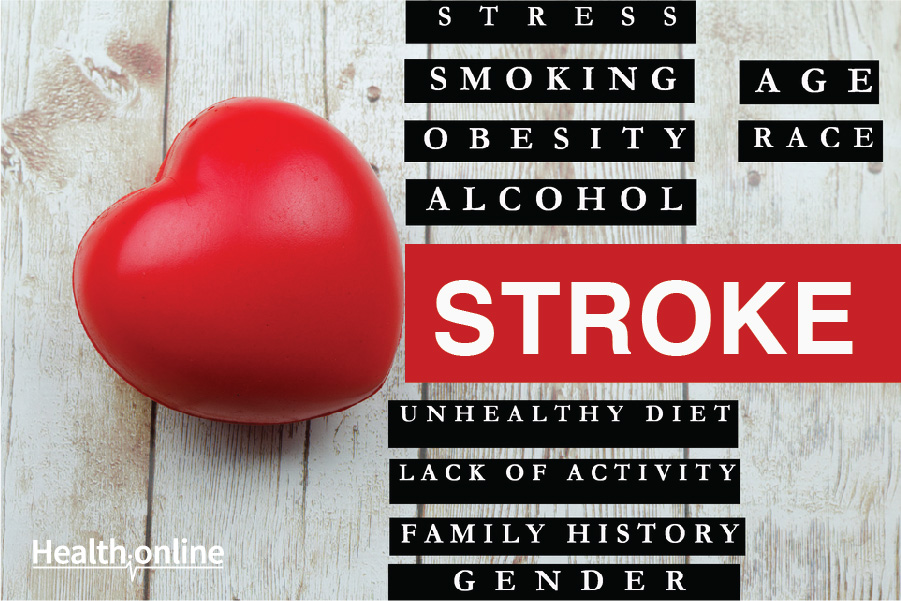
Risk factors of Stroke
Non-modifiable Risk Factors of Stroke
A number of people are at higher risk of stroke, some risk factors can be controlled and some cannot. If you were underweight at birth, for instance, your chances of getting a stroke are higher, this is a risk factor that is out of the person’s control. Other factors beyond our control include:
Gender: It is well documented that up until age eighty, men are generally at higher risk of stroke than women. Once a woman is eighty, her stroke risk factor becomes higher than that of an eighty-year-old man. Studies also show that women who do have strokes are more likely to die from them and men with strokes have complete recoveries.
Age: People over sixty are at higher risk for stroke than the general population. This risk continues to rise, doubling every decade after fifty-five, though it is important to know that strokes can occur at any age.
Ethnicity: African Americans and those of Hispanic origin have a higher incidence of strokes than white people, according to several studies. This disparity exists even after setting aside differences in income and assets.
Heredity: People whose immediate family members have had one or more strokes have a higher than average risk.
Disease profile : There are a number of diseases that increase a patient’s risk of stroke. Chief amongst these is diabetes, which is one among many arguments for monitoring and treating one’s diabetes in a timely manner. Studies have shown that folks with sickle cell anemia, carotid artery stenosis, dyslipidemia, and some heart conditions, especially atrial fibrillation, also have a higher stroke risk. Brain tumors and reactions to both legal and illegal drugs can cause stroke.
Modifiable Risk Factors of Stroke
The good news is that there are a number of stroke risk factors within the individual’s control:
Smoking: The single best thing you can do for your health is to quit smoking or refuse to start. Smokers are at a significantly higher risk for stroke than the general, non-smoking population.
Second-hand smoking: You don’t have to be a smoker to have tobacco ruin your life. Passive smoking has been well documented to cause strokes. If you share living space with a smoker, you should have a conversation about how to minimize his or her damage to your health, especially if you have another stroke risk factor. It is not at all unreasonable to ask your wife, husband, or roommate to go outside to smoke, regardless of weather conditions.
High blood pressure: While high blood pressure is often hereditary, it can and should be controlled by medication if it cannot be permanently lowered by reducing stress and losing weight. Because high blood pressure so often causes brain artery rupture, it is critically important to control a chronic blood pressure condition.
Obesity and physical inactivity: To speak plainly, no one can afford to be extremely overweight. Similarly, no one can afford to lie in bed all day, every day, watching television. One of the many outcomes of obesity is being at high risk for stroke. Dieticians and physical therapists can develop effective programs to reduce the weight of obesity victims. For the rest of us, it is extremely important to monitor eating and exercise habits daily to prevent weight gain. Most people who are not currently overweight can avoid obesity by limiting their daily calorie intake, eating lots of raw fruits, vegetables, and whole grains, and getting at least twenty minutes of exercise a day.
Poor diet: Just because someone is skinny does not necessarily mean they are healthy. Eating too many fast foods, processed foods, salt, sugar, and too few whole foods can lead to stroke, regardless of weight.
While the possibility of a stroke is scary, knowing your risk profile and taking decisive action to prevent stroke will pay off. The Centers for Disease Control and other health agencies agree that around eighty percent of strokes are preventable with vigilant care, testing, and good lifestyle choices.




